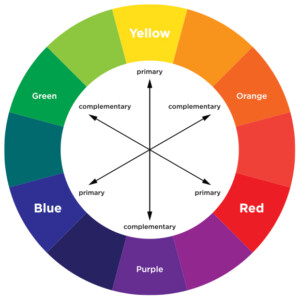Unveiling the Colorful Secrets of Hair Pigment and Color Theory
Hey! Let’s embark on a fun, colorful journey to understand the magic behind hair pigment and color theory. Think of it as your ultimate guide to why your hair color looks the way it does and how to achieve that dreamy shade you’ve been eyeing.
The Melanin Magic
First up, let’s talk about melanin, the superhero of hair color. Your natural hair color comes from two types of melanin: eumelanin and pheomelanin. Eumelanin gives your hair those beautiful black and brown hues, while pheomelanin adds the spicy reds and sunny yellows into the mix. The amount and combination of these two types determine whether you’re rocking deep chocolate brown, fiery red, golden blonde, or anything in between.
Understanding Color Levels and Tones
Hair color levels are like a scale from 1 to 10. Level 1 is the deepest black, and level 10 is the palest blonde. Simple, right? But wait, there’s more! Each color can also have a tone—cool, neutral, or warm. Cool tones have hints of blue or ash, neutral tones are balanced, and warm tones boast a touch of red, orange, or yellow.

The Color Wheel: Your Best Friend
Imagine a big, vibrant color wheel. Colors opposite each other on this wheel are complementary and cancel each other out. This trick is super handy for fixing unwanted tones in your hair. If your blonde hair is looking a bit too yellow (brassy), purple shampoo will save the day. Purple is opposite yellow on the color wheel, so it neutralizes those unwanted warm tones.

Alright, let’s dive into the rainbow of hair hues with a splash of style! Picture a vibrant garden of colors, where every strand of hair is like a unique flower, bursting with its own pigment potential. This is where color theory comes in, the art and science of understanding how these pigments play together to create the shades we crave.
First off, imagine your hair as a canvas. Whether you’re rocking a fiery red, a cool blue, or a mellow blonde, it all starts with pigment. Think of pigment as the magic potion that gives your hair its hue. But here’s the kicker: not all pigments are created equal, and they can be as stubborn as a cat in a bathtub when it comes to changing shades.
You see, every natural hair color contains a blend of pigments—reds, yellows, blues—that determine its unique hue. So, when you want to switch things up, you’re essentially asking those pigments to do a color-coded tango. But here’s the twist: some pigments are more stubborn than others. Ever tried to turn jet black hair into a platinum blonde in one go? Yeah, not gonna happen without a serious battle plan.
That’s where the magic of hair coloring comes in. It’s like playing with a box of crayons, but instead of paper, you’re coloring your locks. Different shades require different strategies. Want to go from brunette to blonde? Get ready for a journey, because those dark pigments are gonna put up a fight. It might take multiple sessions of gentle coaxing to reach your desired shade without frying your strands in the process.
And hey, that’s the fun part! It’s like unraveling a hair-color mystery, one strand at a time. Each session brings you one step closer to your dream ‘do, and the journey is just as exciting as the destination. So, next time you’re contemplating a hair transformation, remember: it’s not just about slapping on some dye and crossing your fingers. It’s a colorful adventure, filled with twists, turns, and plenty of pigment-powered surprises.
Can you go from previously colored blue black to platinum blonde hair color? Maybe, but not without more than one session with a hair color correction specialist because this will require strong solutions to ‘lift’ the previous dye from the hair without damaging or weakening it in the process.
Why Does Hair Get Warm?
Now, onto the burning question: why does hair sometimes get warm or “brassy”? When you lighten your hair, it’s like peeling an onion—those underlying red and yellow pigments from pheomelanin are revealed. If you don’t lift the color enough, you end up with those warm tones peeking through. This is your hair’s way of saying, “I’m not done yet!”.
Hot Roots Explained
Ever noticed your roots turning out warmer than the rest of your hair? That’s because your new growth (roots) is fresh and takes color differently than the rest of your hair, which has already been treated. This phenomenon is lovingly termed “hot roots.” Think of them as your hair’s way of standing out in a crowd.
How to Keep Your Cool
So, how do you keep those warm tones at bay? It’s all about using the right products and techniques. Purple shampoos are a blonde’s best friend for neutralizing yellow tones, while blue shampoos work wonders for brunettes fighting off orange hues. And always, always chat with your stylist about the look you’re aiming for—they’re the Picasso to your hair canvas.
Fun Fact
Ever wonder how celebs transition from dark locks to platinum blonde seemingly overnight? Spoiler alert: it’s not overnight! It often takes multiple sessions and a lot of TLC to avoid those unwanted warm tones. So, patience is key, my friends.
There you have it! Your fun and friendly guide to understanding hair pigment and color theory. Keep these tips in mind, and you’ll be on your way to hair color perfection. Stay fabulous, and let your hair be your most vibrant accessory!
Got more hair questions? Let us know!

